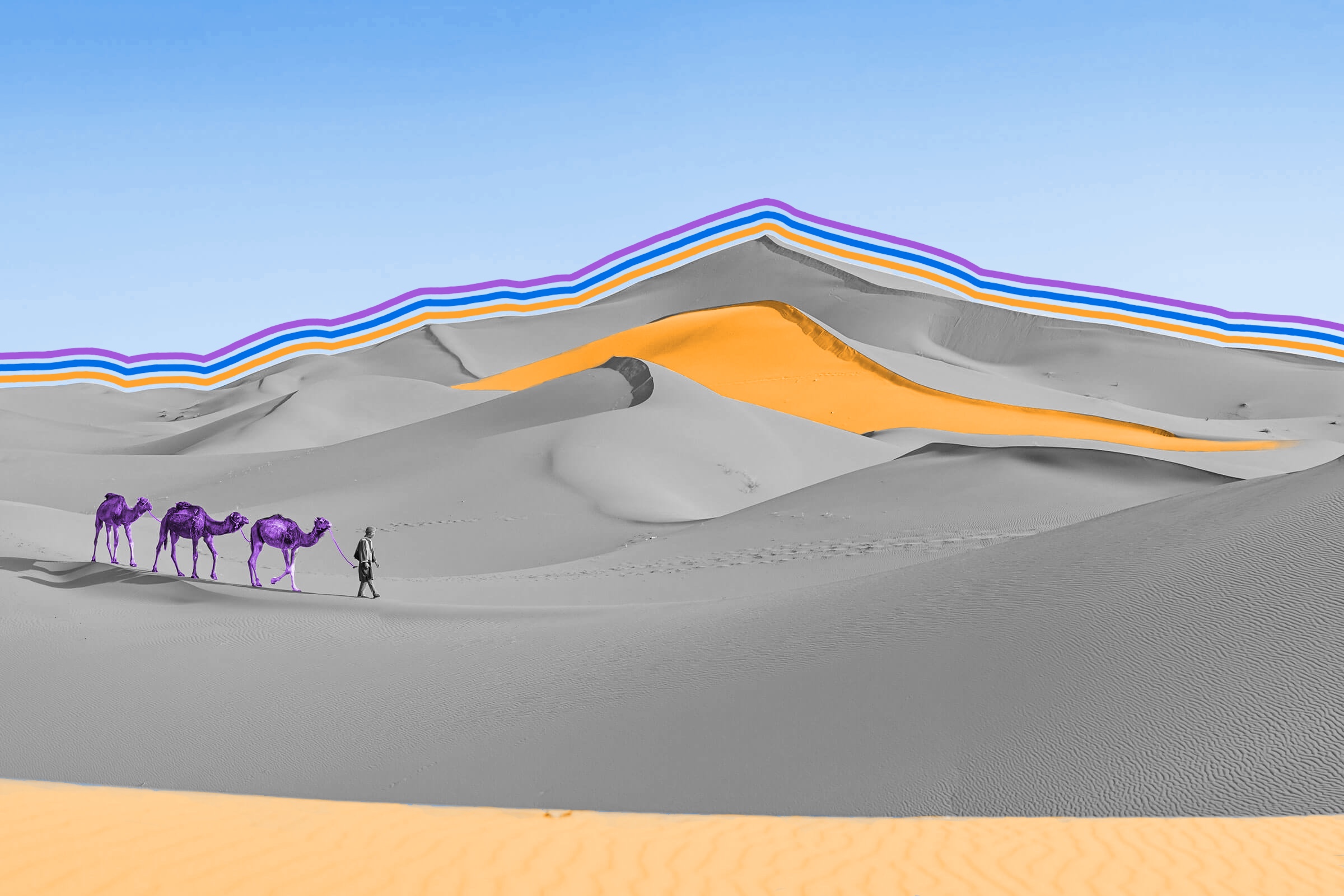
Sand dunes can “sing.”
Most rock formations found in nature are revered for their stoic appearance — think snow-capped mountains or monoliths like the Rock of Gibraltar. But some more active landscapes, like ever-shifting sand dunes, have a livelier presence: They can “sing.” An estimated 35 sand dunes around the world, including some in the United Arab Emirates, Chile, and the U.S., are known to produce eerie, vibrational hums in a variety of tones. Some even produce booms or croaking sounds. Marco Polo noted the phenomenon during his travels, and many communities surrounding dunes have developed their own superstitions about the songs. Yet for centuries, no one really understood why or how these sounds happened.
Today, scientists believe sand dunes produce their songs in part because of avalanches. By nature, sand dunes shift as wind whips sand into new locations, and it’s likely the humming sound occurs when air pushes through millions of sand grains as they tumble into new positions. Even then, it takes a combination of weather conditions to create the silty harmonies; generally, sand must be extremely dry to emit sound.
Some of the world’s loudest sand dunes are found in China in the Badain Jaran Desert, reaching more than 1,600 feet tall and emitting sounds that peak at 105 decibels — the same volume as a music concert. In North America, the largest sand dunes are all found within Great Sand Dunes National Park in southern Colorado, reaching 741 feet at the base of the Sangre de Cristo Mountains, where scientists believe they have been singing their tune for nearly 12,000 years.
Musical training has a lot to do with how well someone can carry a tune, though researchers believe that genetics may also play a role. Perfect pitch — being able to easily identify or replicate a particular note without any help — is often sought after by musicians, but is considered relatively rare; an estimated one to five people out of every 10,000 have the ability. Remarkably, perfect pitch often runs in families, leading some scientists to believe there’s a genetic component to musical talent. However, you don’t need to be a member of the von Trapp family to become a skilled singer. Some studies show that children who begin musical training by age four have a higher chance at developing perfect pitch, and in some cases, people develop the skill at older ages, joining the likes of perfect-pitch musicians such as Ella Fitzgerald, Jimi Hendrix, and Mozart.

